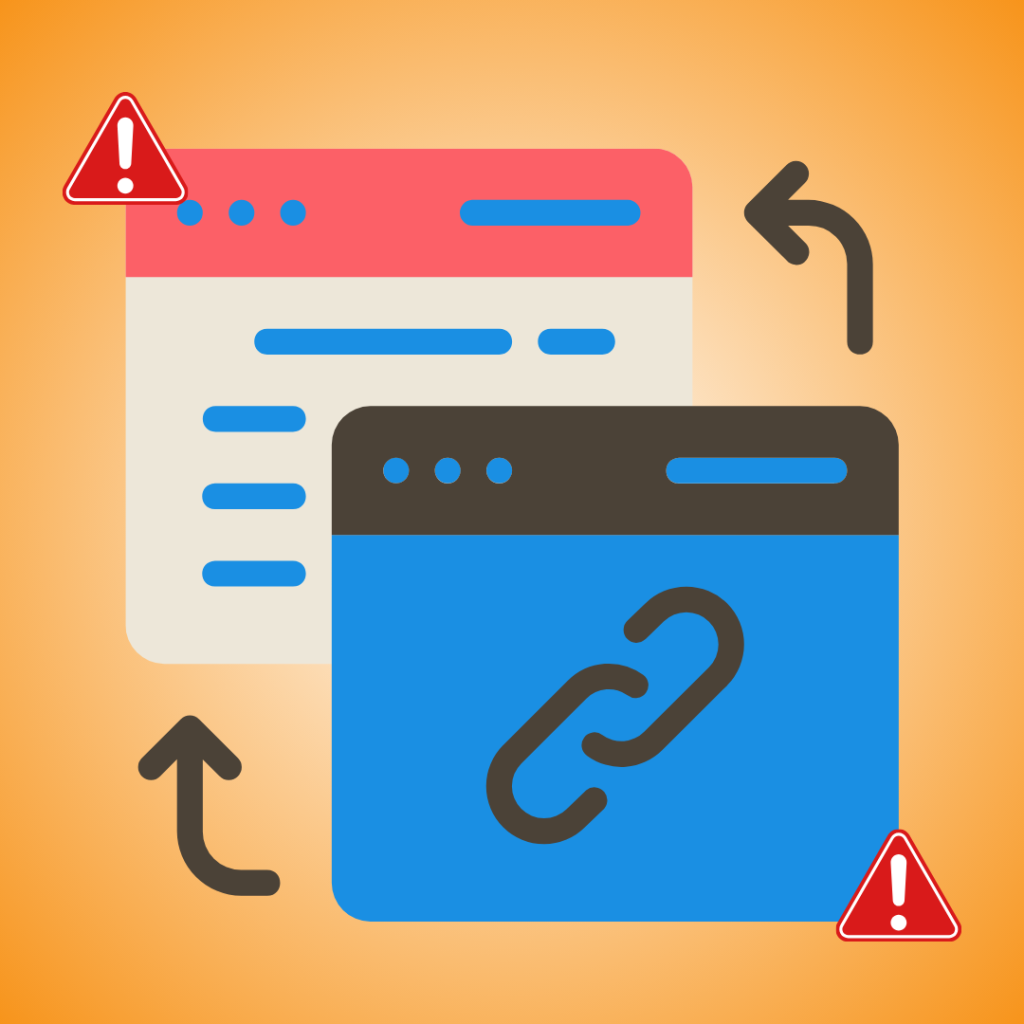How to Identify and Disavow Toxic Backlinks
One toxic backlink can wreck your rankings faster than you can say “Google penalty.” If you’re a home service business aiming to rank higher in local search results and attract more customers in your area, paying attention to your backlink profile is non-negotiable.
While backlinks are intended to enhance your SEO, toxic backlinks can derail your efforts, harm your domain authority, and potentially trigger manual action penalties.
This guide breaks down everything you need to know about toxic backlinks—what they are, how to identify them, and how to disavow them properly—so you can keep your SEO efforts on track.

What Are Toxic Backlinks?
Toxic backlinks are links from websites or sources that negatively impact your website’s SEO. They’re often built with manipulative or low-quality practices, which Google penalizes.
Common Characteristics of Toxic Backlinks
- Spammy or Irrelevant Websites: Backlinks from websites unrelated to your niche—such as gambling or adult sites—are red flags.
- Excessive Exact-Match Anchor Text: When multiple backlinks use exact-match keywords as anchor text, it signals manipulation.
- Link Farms or Private Blog Networks (PBNs): These shady practices aim to inflate backlink numbers artificially and are easily detected by Google.
- Backlinks from Penalized or Blacklisted Sites: Links from websites already penalized by Google can tarnish your own domain authority.
How Toxic Backlinks Harm Your SEO
- Negative Impact on Domain Authority. Toxic backlinks drag down your domain authority, making it harder for your site to compete in search rankings.
- Increased Risk of Google Penalties. Search engines may issue penalties, tanking your rankings or removing your site from search results entirely.
- Reduced Trustworthiness in the Eyes of Search Engines. An influx of toxic backlinks signals poor credibility, making it more difficult for your website to rank well.
How to Identify Toxic Backlinks
Before you disavow any links, it’s essential to assess your backlink profile comprehensively. Following these steps will help you focus your efforts on the most important links.
Step 1 – Use a Backlink Analysis Tool
The first step to identifying toxic backlinks is generating a complete report. Utilize tools like Ahrefs, SEMrush, or Google Search Console for this task.
- Ahrefs: Log into your account and use the Site Explorer feature. Enter your domain, click on “Backlink Profile,” and export your backlinks list.
- SEMrush: Navigate to the Backlink Analytics tool. Enter your domain, review the report under “Backlinks,” and export the data.
- Google Search Console: Go to the “Links” section and download the list of backlinks under “External Links.”
These tools provide detailed insights into where your backlinks are coming from, making it easier to identify problematic ones.
Step 2 – Evaluate Backlink Quality
Once you have your backlink report, it’s time to evaluate the quality of each link. Focus on the following key metrics:
- Domain Authority (DA): Links from high-authority domains generally boost your SEO, while links from very low DA sites can be harmful.
- Spam Score: High spam scores often indicate toxic backlinks that need immediate attention.
- Content Relevance: Check if the linking site’s content is relevant to your niche. For example, a roofing business receiving a backlink from a gambling website would clearly be flagged as toxic.
By analyzing these factors, you can start distinguishing harmful links from those aiding your SEO.
Step 3 – Categorize the Links
Organize your findings by separating high-risk toxic backlinks from low-quality but harmless ones. Use a simple table format to track and categorize links:
| URL | Spam Score | Action Required |
| spamsite.com | High (85%) | Disavow |
| unrelatedforum.net | Medium (60%) | Monitor |
| legitimateblog.com | Low (10%) | No action needed |
This clear categorization ensures you can take the appropriate actions—whether that’s disavowing a harmful link or keeping an eye on a low-quality one.
When Should You Disavow Backlinks?
Disavowing backlinks is a serious step that should only be taken as a last resort. Improper use of the disavow tool can harm your site further, so proceed with caution.
You should only disavow backlinks in specific situations:
- Manual Action Penalty from Google: This occurs when Google flags your site for harmful, unnatural links, requiring you to address the issue to avoid further penalties.
- Toxic Backlinks Affecting Rankings: A surge of harmful backlinks can significantly drag down your search engine rankings, making recovery difficult without taking action.
Avram Gonzales, Chief Strategist at Digital Harvest, puts it best, “Not all bad backlinks need to be removed. Focus on disavowing the ones that are actively harming your site’s rankings to see real improvement.”
Keep this balanced approach in mind to protect your site without overcorrecting.
How to Disavow Toxic Backlinks
Disavowing toxic backlinks can be a crucial step in protecting your site’s SEO health and improving its rankings. Here’s a step-by-step guide to help you effectively disavow harmful links and monitor the outcomes.
Step 1 – Create a List of Links to Disavow
The first step is identifying and compiling a list of toxic links you want to disavow. Once you’ve identified the undesirable links, format your disavow list according to Google’s specific requirements:
- Add one domain or URL per line.
- For entire domains, use the format `domain:spamsite.com`.
- For specific URLs, simply enter the full link (e.g., `http://spamsite.com/spam-page`).
Once your list is ready, save it as a `.txt` file to upload later.
Step 2 – Submit the Disavow File to Google
After creating your disavow file, the next step is to submit it via Google Search Console. Here’s how to do it:
- Go to the Google Disavow Tool.
- Select your website from the list of properties.
- Click on the “Upload Disavow File” button.
- Choose and upload your `.txt` file with the list of toxic backlinks.
- Confirm your submission by following the on-screen prompts.
Remember to double-check your file to ensure it only includes harmful links. Accidentally disavowing the wrong links can negatively impact your site’s rankings.
Step 3 – Monitor the Results
Once you’ve submitted the disavow file, it’s essential to monitor the results. Start by keeping an eye on your site’s rankings and overall traffic over the next few weeks or months. Improvements may take time, as Google needs to reprocess your disavowed links.
Additionally, consider running another backlink audit after a few months to review your link profile. This ensures no new toxic backlinks have popped up and allows you to take further action if necessary. Consistent monitoring is key to maintaining a healthy backlink profile and improving your site’s SEO performance.
Best Practices for Preventing Toxic Backlinks
Build a Strong Backlink Profile
Creating a strong backlink profile starts with focusing on quality and relevance, not just quantity. High-quality backlinks typically come from reputable websites in your niche or industry, which signal to search engines that your content is trustworthy and valuable. A few key strategies can help you achieve this.

For instance, consider guest blogging on authoritative websites where you can share your expertise while earning a valuable backlink. Submitting your site to credible industry directories or engaging in local sponsorship opportunities can also help you gain relevant, high-quality links.
The goal is to build relationships with sites that align with your content and audience, ensuring your backlink profile remains robust and beneficial to your SEO.
Monitor Backlinks Regularly
Proactive monitoring is essential to catching toxic backlinks before they harm your site.
Use tools like Ahrefs, SEMrush, or Google Search Console to stay on top of your backlink profile. Setting up notifications for new backlinks can provide real-time insights into potentially harmful links as they appear.
Additionally, conducting quarterly backlink audits is a smart way to identify and address potential threats early. This routine maintenance not only protects your site from toxic backlinks but also keeps your SEO performance strong by ensuring your link profile stays clean and reputable.
Regular monitoring shows search engines you’re serious about maintaining the integrity of your site.
Keep Your Backlink Profile Clean and Healthy
Toxic backlinks can feel like the underbelly of SEO, but there’s no need to panic. By identifying harmful links, using the disavow tool carefully, and proactively building high-quality links, your home service business can maintain a clean backlink profile and protect your SEO rankings.
Need help safeguarding your website? Connect with Avram Gonzales on LinkedIn or get in touch with Digital Harvest today.
Let us guide you through building high-quality backlinks, improving your site’s domain authority, and boosting your SEO rankings for lasting growth.
